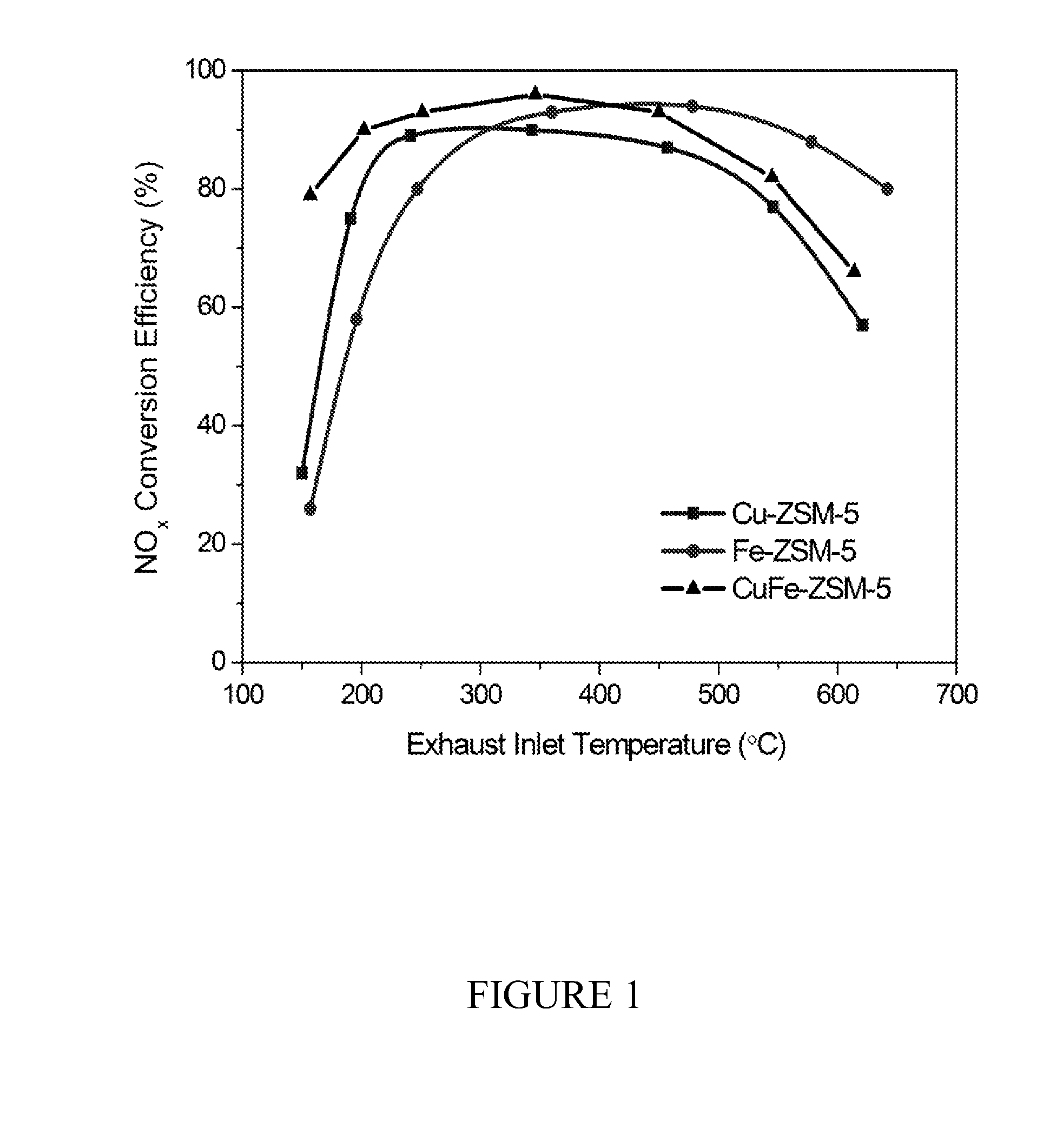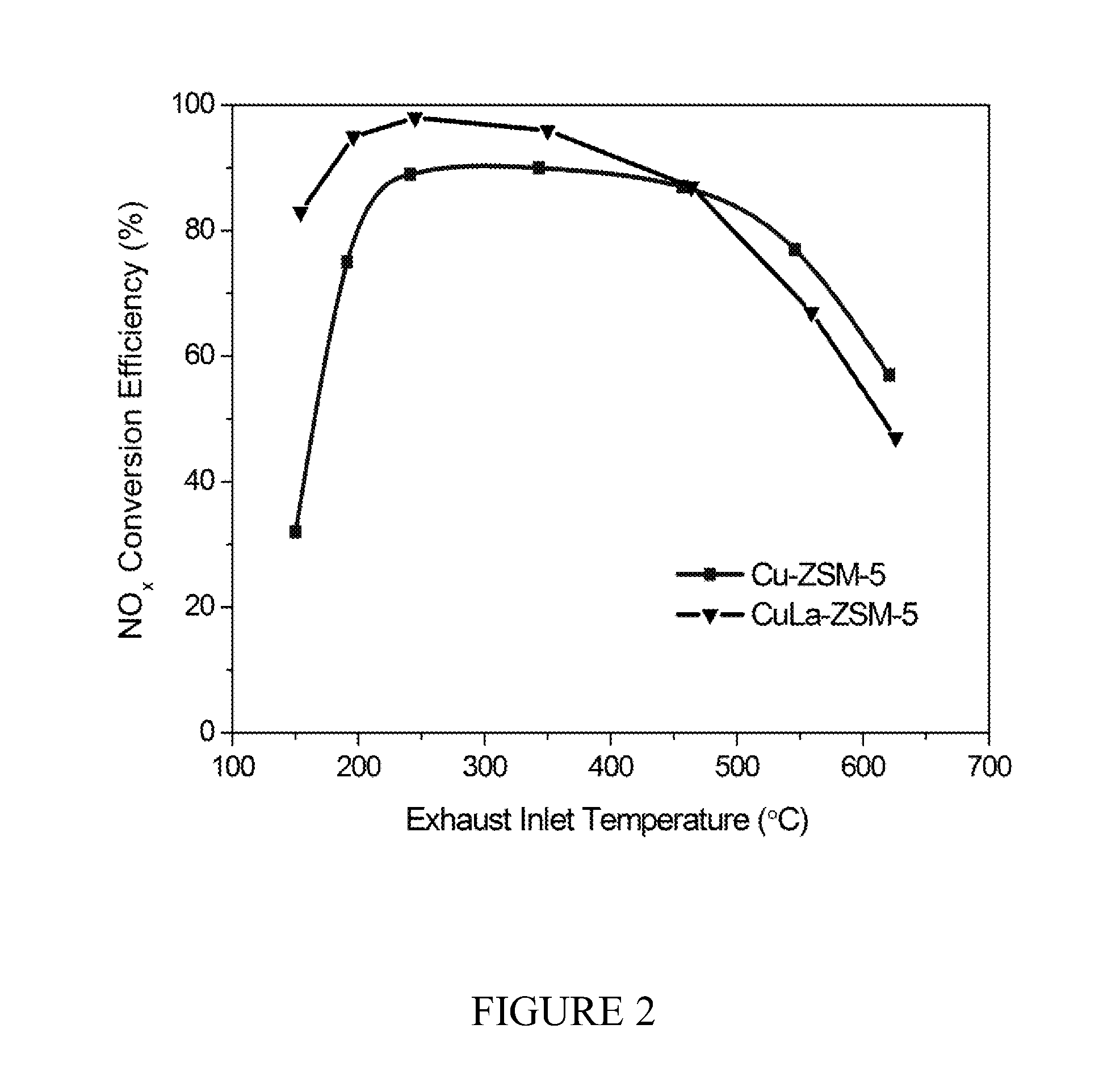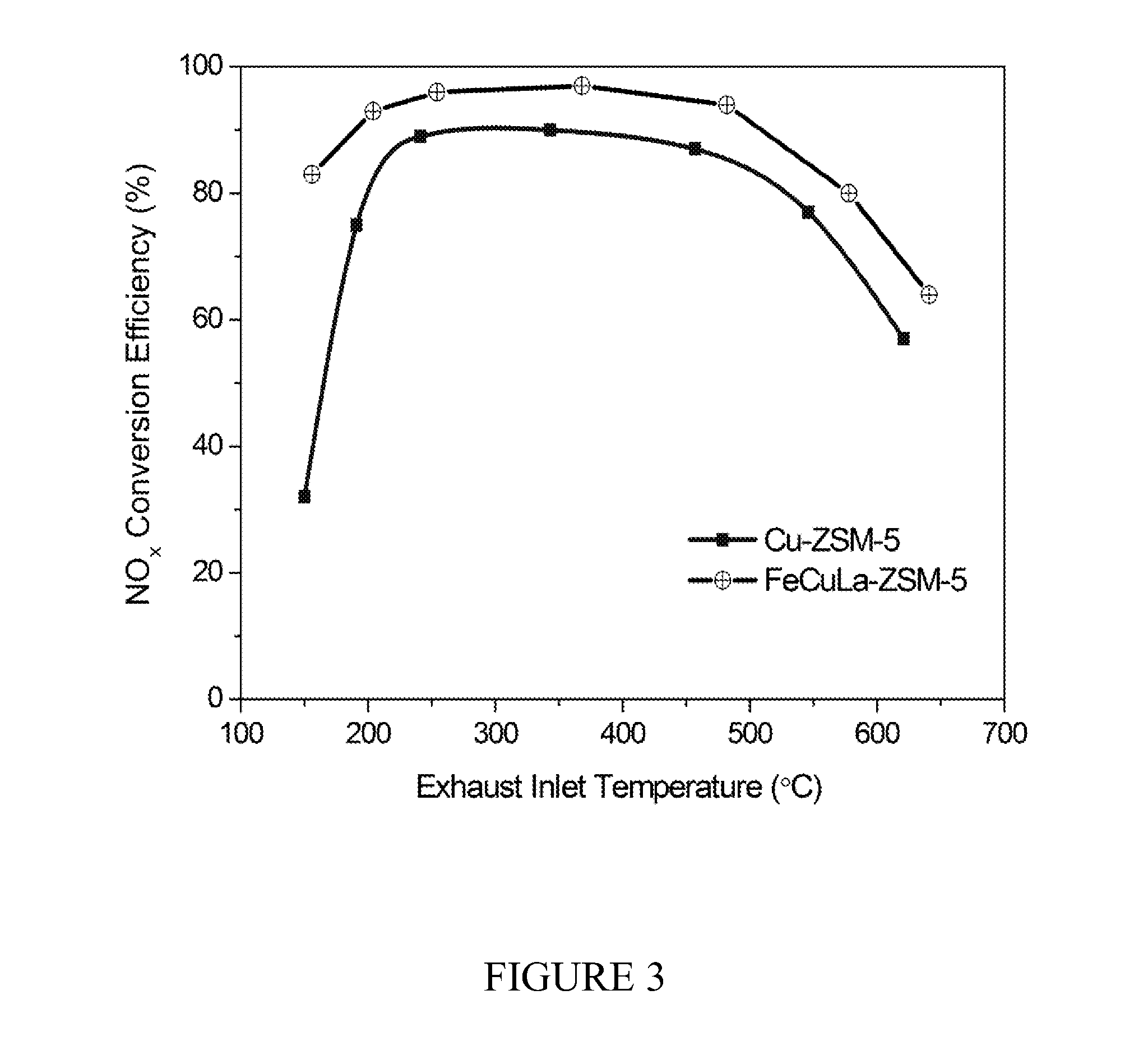Zeolite-based scr catalysts and their use in diesel engine emission treatment
a technology of zeolite and catalyst, which is applied in the direction of physical/chemical process catalyst, metal/metal-oxide/metal-hydroxide catalyst, separation process, etc., can solve the problems of not meeting epa regulatory requirements when used for diesel engines, nosub>x /sub>gases can be efficiently removed, and nosub>x /sub>gas removal in diesel engine lean emissions continues to be a significant challenge, etc., to reduce nox
- Summary
- Abstract
- Description
- Claims
- Application Information
AI Technical Summary
Benefits of technology
Problems solved by technology
Method used
Image
Examples
example 1
Preparation of Cu—Fe-ZSM5 Catalyst
[0061]A Cu-ZSM-5 precursor was first prepared by impregnating H-ZSM-5 with copper (II) acetate as follows: 2.664 g of copper acetate hydrate (i.e., Cu(OAc)2.6H2O) was dissolved in 600 mL de-ionized water (0.015M), followed by addition of 10.005 g of H-ZSM-5 zeolite. The slurry was kept stifling for two hours at 50° C. Cu-ZSM-5 (blue in color) was collected by filtration after cooling, washed with de-ionized water, and calcined in the air at 500° C. (10° C. / min) for four hours. The produced Cu-ZSM-5 precursor was then impregnated with iron (III) nitrate to produce Cu—Fe-ZSM-5 as follows: 5 g of Cu-ZSM-5 was suspended in a water solution of 25 mL of 0.015M Fe(NO3)3, degassed with N2, and was kept stifling for two hours at 80° C. Brown solid was obtained after filtration, whilst the filtrate was clear and colorless. The product was then calcined in air at 500° C. (2° C. / min) for two hours. The resulting Cu—Fe-ZSM-5 catalyst was found to contain 2.39% C...
example 2
Preparation of Cu—La-ZSM5 Catalyst
[0062]A Cu-ZSM5 precursor, produced as in Example 1, was impregnated with lanthanum nitrate to produce Cu—La-ZSM-5 as follows: 10 g Cu-ZSM-5 was suspended in a water solution of 50 mL 0.015M La(NO3)3. The slurry was heated to 85° C. for two hours, then cooled to room temperature, filtered, and washed with deionized water to provide a blue solid. The blue solid was dried at 140° C. (10° C. / min) for two hours, and subsequently calcined at 500° C. (10° C. / min) for two hours. The resulting Cu—La-ZSM-5 catalyst was found to contain 2.96% Cu and 0.156% La.
example 3
Preparation of Fe—Cu—La-ZSM5 Catalyst
[0063]A Fe-ZSM5 precursor was first prepared by impregnating H-ZSM5 with iron (III) nitrate as follows: 12 g of H-ZSM-5 was suspended in a degassed 300 mL solution of 0.1 M Fe(NO3)3.9H2O and stirred for 24 hours at ambient temperature to produce a powder. The powder was filtered, washed, dried at 100° C. for 12 hours, and calcined at 550° C. (10° C. / min) for four hours. 10 g of the produced Fe-ZSM-5 powder was then sequentially exchanged with Cu(OAc)2 solution (0.015 M, 600 mL) and La(NO3)3 solution (0.15 M, 50 mL) with washing and calcination as described above. The resulting catalyst, Fe—Cu—La-ZSM-5, was further activated in a He flow at 700° C. for one hour before use. The catalyst was found to contain 2.14% Cu, 707 ppm Fe, and 848 ppm La.
PUM
| Property | Measurement | Unit |
|---|---|---|
| temperatures | aaaaa | aaaaa |
| temperatures | aaaaa | aaaaa |
| temperatures | aaaaa | aaaaa |
Abstract
Description
Claims
Application Information
 Login to View More
Login to View More - R&D
- Intellectual Property
- Life Sciences
- Materials
- Tech Scout
- Unparalleled Data Quality
- Higher Quality Content
- 60% Fewer Hallucinations
Browse by: Latest US Patents, China's latest patents, Technical Efficacy Thesaurus, Application Domain, Technology Topic, Popular Technical Reports.
© 2025 PatSnap. All rights reserved.Legal|Privacy policy|Modern Slavery Act Transparency Statement|Sitemap|About US| Contact US: help@patsnap.com



